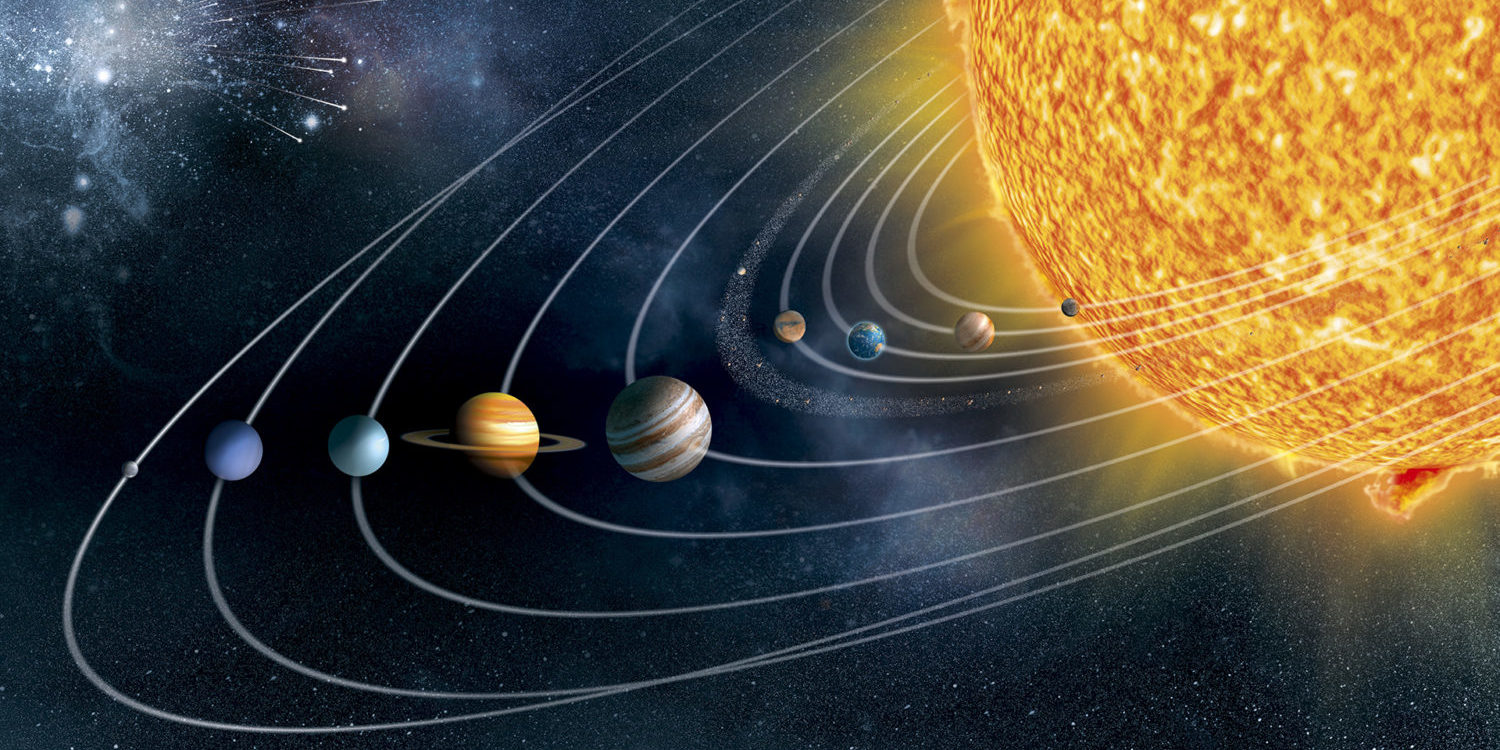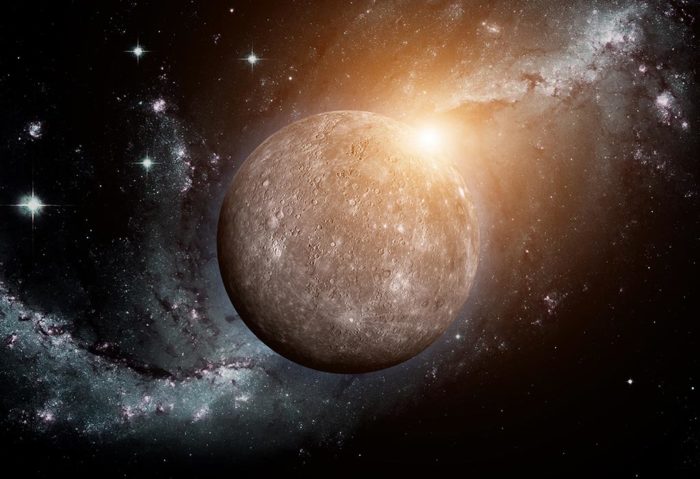Table of Contents
The planet names in Arabic We will speak about planet names in Arabic in this article.
The universe is what is in the dome of the sky, from the celestial bodies
Some of them are dark like planets, and the Earth on which we live is one of these planets
Among the celestial bodies are those that are luminous and moving like the stars
Our sun, which provides us with light and heat, is one of them, and the scientific concept of the universe is that it is the vast space that contains stars, galaxies, planets, meteors, and comets.
All of them belong to the so-called galaxies, and there are a huge number of them. These galaxies have different shapes, some of which are oval and some are phallic.
The most famous of these galaxies is the Milky Way, to which our planet Earth belongs.
The sky that we see is not a material medium but rather gases in constant proportions that spread through space
The blue that we see is the only color left in the spectrum from the decay of sunlight
Also, all celestial bodies in space are members of our planet, which we belong to, which is known as the galaxy
If we observe a particular star at a certain time, we notice its change in its location
The planet names in Arabic and the characteristics of each
The planet names in Arabic, Otared, عُطارد
1.Otared: It means Mercury
It is the smallest planet in the solar system and the closest to the sun.
The Arabs called this planet “Mercury”; Relative to the steady, continuous, and also fast running
The name of the planet Mercury, which symbolizes the great speed of the planet’s rotation around the sun
It has a diameter of about 4,880 km and a mass of 0.055 Earths
It orbits around the sun in 87.969 days.
Mercury has the highest value of orbital anomalies of all the planets in the solar system
It has the smallest axial tilt of these planets and it completes three revolutions about its axis for every two orbits.
Mercury appears brilliantly when viewed from Earth
The apparent magnitude ranges from -2.3 to 5.7
But it is not easy to see from high latitudes, while it can be seen from middle and lower latitudes
Mercury has no natural moons, and he and Venus are the only planets without a moon system.
To answer the cause of the anomalies in these two planets, a hypothesis was proposed in the mid-1960s, that Mercury was the moon of Venus and managed to escape from its orbit around Venus.
The planet names in Arabic, Alzuhra
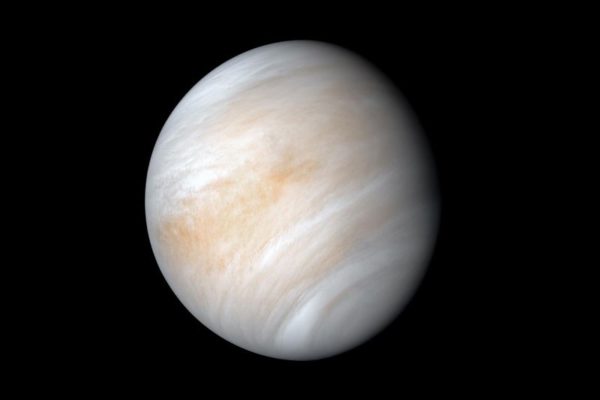
2.Alzuhra: It means venus الزُهرة
It is the second planet in the solar system in terms of its distance from the sun.
Venus is about 108 million kilometers from the sun, and its orbit around the sun is not completely circular.
It is a dirt planet like Mercury and Mars, similar to planet Earth in terms of size and composition.
Venus is named after the goddess of beauty
Venus is closer to the Sun than Earth
It orbits in its orbit around the sun at a distance of about 108 million km, while the Earth revolves in its orbit outside the orbit of Venus, at a distance of 150 million km from the sun.
Therefore, it is seen in the same area in which the sun is. Therefore, seeing it from the surface of the earth is only possible before sunrise or shortly after sunset.
So it is sometimes called the morning star or the evening star.
When it appeared during this period, it would be the brightest luminous object in the sky
Venus is a windy, hot planet
It is roughly the size of Earth, which is why it is called sister earth
Whereas, the weight of a human being at its surface will be roughly the same as it would on Earth.
If someone weighs 70 newtons, they will reach 63 newtons on the surface of Venus.
The planet Al-Ard
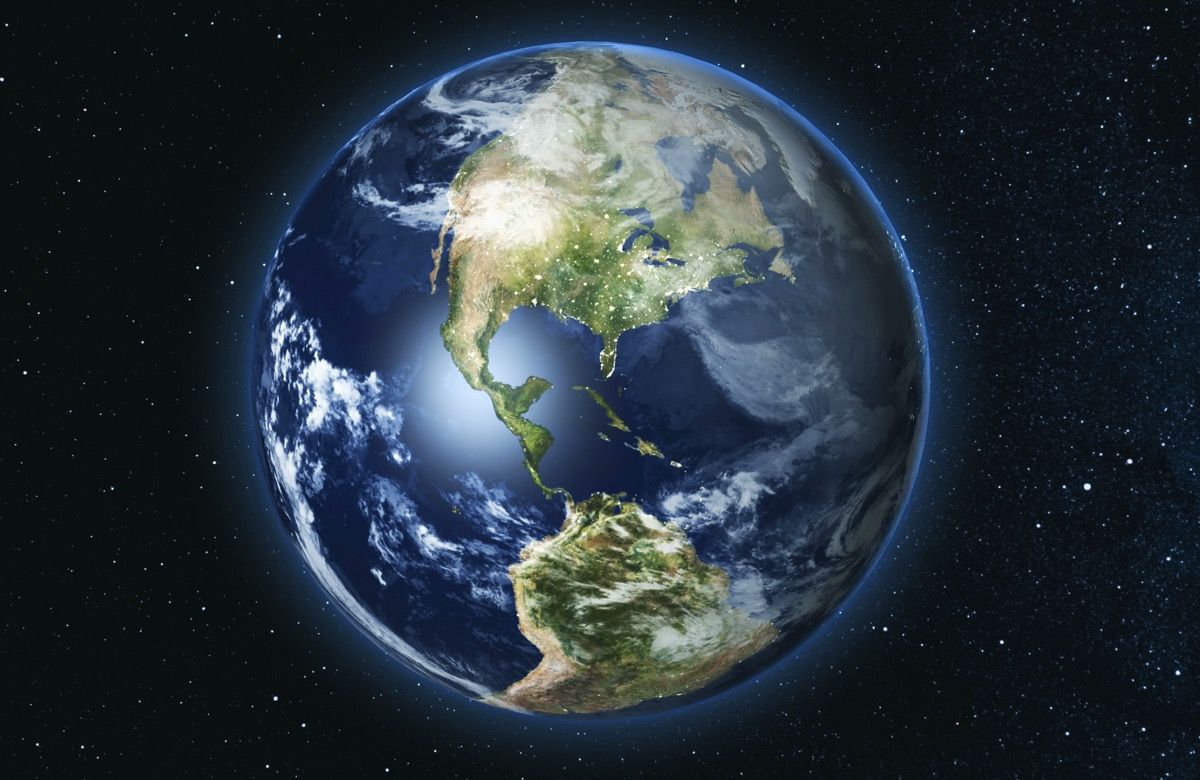
3.Al-Ard: It means Earth الأرض
It is the third planet in the solar system after Mercury and Venus
Also, It is one of the largest terrestrial planets and the fifth largest planet in the solar system
It is in terms of its diameter, mass, and density
This planet is also called the world and the world.
Earth is home to millions of species of living things, including humans
It is the only place in the universe known to have life. Earth formed about 4.54 billion years ago
Life appeared on its surface in the last billion years.
Since then the Earth’s biosphere has altered the atmosphere and the abiotic conditions present on the planet
This allowed the reproduction of organisms that only lived in the presence of oxygen
The ozone layer forms, which works with the Earth’s magnetic field to block harmful radiation, allowing life to exist on the Earth’s surface.
The ozone layer blocks UV rays
The Earth’s magnetic field displaces and expels the charged elementary particles coming from the sun at great speeds and pushes them away in outer space away from the earth, so they do not cause any harm to living organisms.
The planet Al-marreikh
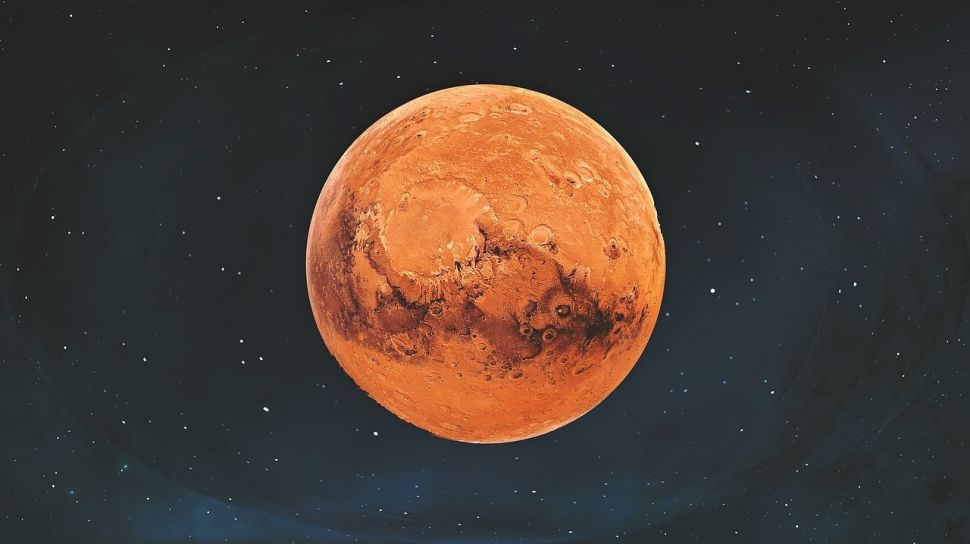
The planet names in Arabic:
- Al-marreikh: It means Mars or the red planet المريخ
It is the fourth farthest planet from the sun in the solar system
It is Earth’s outermost neighbor and is classified as a rocky planet, from a group of terrestrial (similar to Earth) planets.
The nickname of the red planet, because it is caused by the reddish color of the planet, or redness due to the high proportion of iron oxide (III) dust on its surface and in its atmosphere.
Mars is about 6,792 km (4,220 mi) in diameter.
It is thus equal to the radius of the Earth and the second smallest planet in the solar system after Mercury.
Its area is estimated to be one-fourth of the land area.
Mars revolves around the sun in an orbit that is approximately 228 million km away from it, which is 1.5 times the distance between the Earth’s orbit and the sun
The surface temperature is high – 27 ° C and lows – 133 ° C.
The Martian atmosphere consists of carbon dioxide, nitrogen, argon, water vapor, and other gases.
The planet names in Arabic, Mushtary
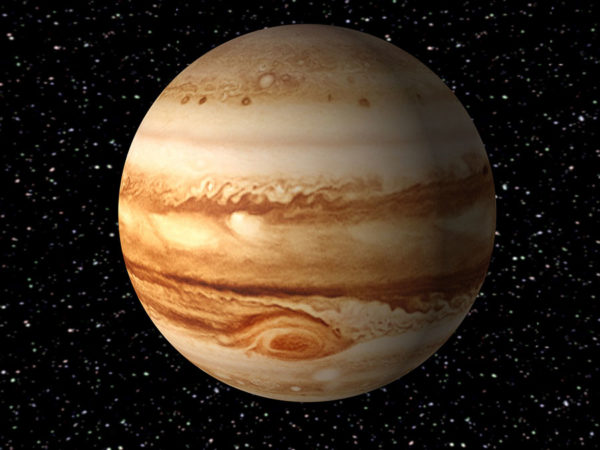
5.Mushtary: It means Jupiter المُشتري
It is the biggest planet in our solar system.
Jupiter was known to ancient astronomers and was associated with the myths and religions of many peoples.
The Romans called him Jupiter and he is the god of the sky and lightning.
Jupiter appears from Earth with great brightness, reaching an apparent magnitude of 2.944, making it the third-largest body in the night sky after the moon and Venus.
Jupiter is the fifth most distant planet from the sun and the largest planet in the solar system.
It is a gas giant and has a mass of just under 1/1000 the mass of the Sun, but it is equal to two-thirds the mass of the sum of the rest of the planets in the group. The classification of gas giants includes Saturn, Uranus, and Neptune in addition to Jupiter. and these four planets are called Juvenil planets.
Jupiter is mainly composed of hydrogen, and helium is just under a quarter of its mass.
Jupiter consists mainly of substances in the gaseous and liquid state and is the largest of the giant planets in the solar system.
The planet Zuhal
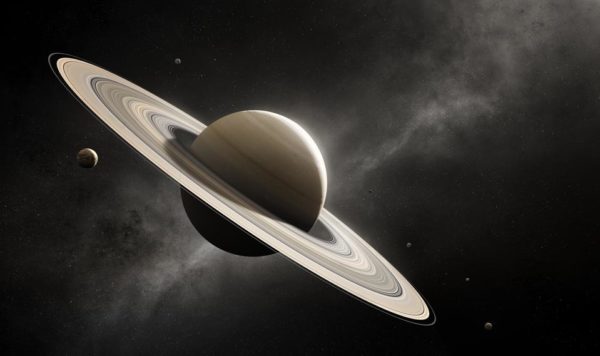
6.Zuhal: It means Saturn زُحل
Named after Saturn, the Roman god of agriculture and harvest
Its symbol is the Scythe of the aforementioned Roman god
Saturn is the sixth most distant planet from the sun and is the second-largest planet in the solar system after Jupiter
Saturn is classified within the gas planets such as Jupiter, Uranus, and Neptune.
Together, these four planets are called “Jovian planets,” meaning “Jupiter-like planets.”
The radius of this planet is nine times the radius of the Earth
However, its density reaches one-eighth of the density of the earth, and its mass is 95 times the mass of the earth.
Environmental conditions on Saturn’s surface are extreme due to its large mass and gravitational pull
Experts say the temperature and pressure in it exceed the ability of scientists and existing technologies to prepare something similar to it and experiment with it in laboratories.
Saturn is made with a high percentage of hydrogen gas and a little helium
Its interior is made of rocks and ice, surrounded by a broad layer of metallic hydrogen and a gaseous outer layer
Saturn is characterized by nine rings of ice and dust that rotate around it in one plane, giving it a distinctive shape.
There are sixty-one known moons orbiting Saturn, except for the smaller ones
Of these, 53 satellites have been officially named.
The planet Uranus
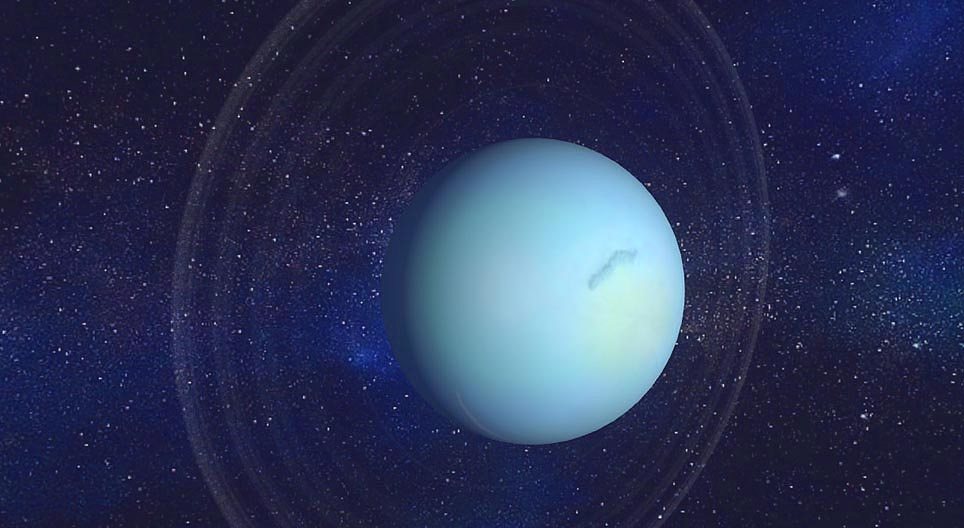
The planet names in Arabic:
7.Uranus:أورانوس
It is the seventh farthest planet from the sun
The third-largest planet in the solar system
Fourth by mass.
It was named after the god Uranus (ancient Greek: ?) in Greek mythology.
It was not distinguished by ancient civilizations as a planet although it is visible with the naked eye
Due to its sluggishness and slow rotation in its orbit.
William Herschel announced his discovery on March 13, 1781, extending the boundaries of known planets for the first time in history.
Uranus was also the first planet to be discovered through a telescope.
The composition of Uranus is similar to that of the planet Neptune.
Both have a different composition from the other gas giants (Jupiter and Saturn).
So astronomers sometimes classify it under the classification of an ice giant.
The composition of the atmosphere is similar to that of both Jupiter and Saturn
It is mainly composed of hydrogen and helium
However, it contains higher ice content such as water ice, methane, and ammonia with some traces of hydrocarbons.
Its atmosphere is the coldest in the solar system, with an average temperature of 49 K (-224 ° C).
Uranus has been explored by only one NASA flight
It is the flight of the Voyager 2 probe, which approached the planet to its highest point on January 24, 1986
No other flight has since been sent
No new probe is planned to be sent soon
The planet names in Arabic, Neptune
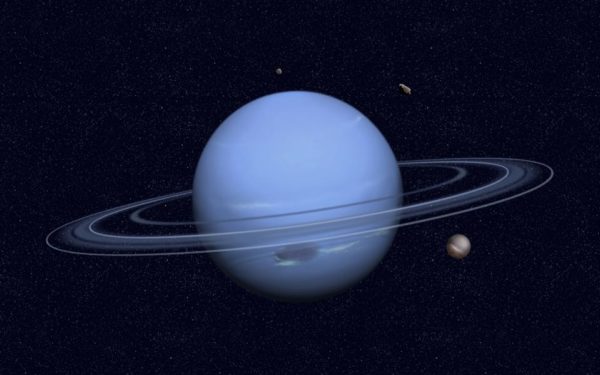
8.Neptune: نبتون
In Greek, it means the god of water, and it is called the blue planet
It is one of the planets of the solar system and is the fourth largest of the eight planets
Also, It is the eighth planet in the solar system and the farthest from the sun in our solar system
It is the fourth-largest planet in relation to its diameter
The third-largest planet in relation to its mass.
Neptune has a mass 17 times the mass of Earth.
It is slightly larger than its close twin, Uranus, which is about 15 times the mass of Earth.
Neptune completes one orbit around the Sun every 164.8 years, at an average distance of about 30.1 astronomical units (4.5 billion km).
Neptune is named after the Roman god of the sea (Neptune), as it was discovered on September 23, 1846.
The planet Neptune is not visible to the naked eye
It is the only planet in the solar system that has been discovered by equations and mathematical prediction.
The unexpected changes in the orbit of Uranus have led astronomers to conclude that the gravitational disturbance is caused by an unknown planet located behind it.
The planet was discovered one degree away from the expected location by mathematical equations.
Neptune’s atmosphere is made of hydrogen and helium
Besides hydrocarbons and possibly nitrogen.
It contains a high percentage of “ice” such as water, ammonia, and methane.
The core of Neptune contains the same components as Uranus, it is made up of rocks and ice.
This is why Uranus and Neptune are considered ice giants.
The planet Pluto
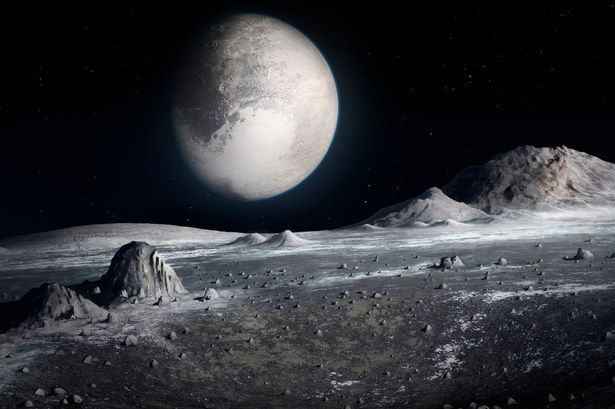
9.Pluto: بلوتو
It is also known as Pluton, and it is a dwarf planet in the Kuiper Belt
A ring of astronomical objects beyond Neptune
It is the first astronomical object discovered in the Kuiper Belt
Also, It was discovered by astronomer Clyde Tombaugh in 1930
It was originally considered the smallest of the nine planets of the Solar System. And it has five moons,
The largest of them is the moon of Charon and its size is roughly two-thirds the size of Pluto
Pluto is the ninth-largest known object orbiting directly around the sun.
It is the largest known object behind Neptune, but smaller than Eris.
Like other objects in the Kuiper Belt, Pluto is primarily composed of ice and rocks
It is relatively small, accounting for about one-sixth of the moon’s mass and a third of its size.
Pluto’s orbit is oblique and tilted
It extends within a range of 30 to 49 astronomical units (4.4 – 4.7 billion km) from the Sun.
This means that Pluto is at regular intervals closer to the Sun than Neptune.
Here, we reach the end of our article about planet names in Arabic.

